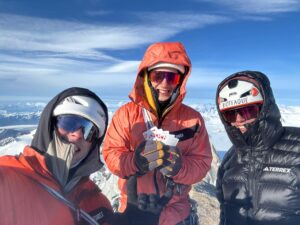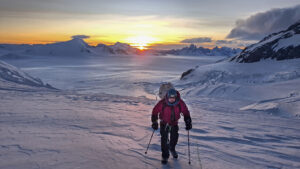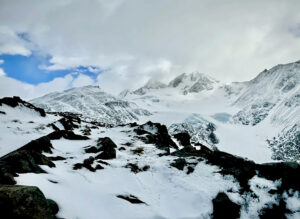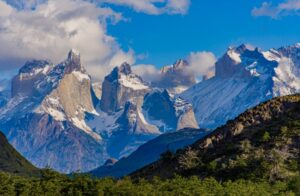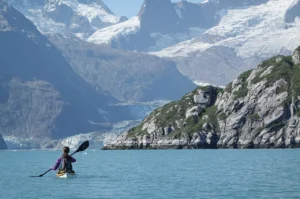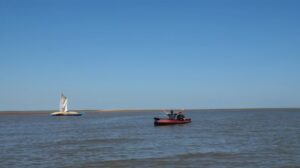In the next few days, Will Copestake and Seumas Nairn begin their attempt to kayak 880km from Punta Arenas to Cape Horn.

This will be their third expedition through the fiords of Patagonia. In 2015, they paddled from Puerto Eden to Puerto Natales, then in 2016 from Puerto Natales to Punta Arenas. They will pick up where they left off.

Will Copestake, left, and Seumas Nairn. Photo: Will Copestake
Veteran kayakers
They will set off just north of Cabo San Isidro and paddle south to Cabo Froward. From here, they cross the Strait of Magellan. After portaging a five-kilometre pass between Monte Saramiento and the Darwin Ranges, they will make their way to the Beagle Channel, then kayak south into the Cape Islands and on to Cape Horn.
On his website, Copestake, 32, says that “To paddle in that region is…a symbol of mastery in Patagonia.”
He has been kayaking there for five years as a guide and exploring for almost a decade. Copestake also racked up 1,300km of experience on previous expeditions with Nairn, picking up the skills required to take on Cape Horn.
He says that he would not attempt it with anyone other than Nairn. They had initially planned to do this a few years ago, but as with so many of us, the pandemic delayed their adventure plans.

Photo: Will Copestake
Cape Horn sits at the southernmost point of Chile’s Tierra Del Fuego. Known as a graveyard for ships, it is a notoriously tricky patch of water. The sea floor shoots up by 3,000m. Strong westerly winds combine with this abrupt shallowing to create huge waves. Temperatures of both water and air hover near freezing.
The Scottish duo will carry all their food and gear with them. They hope to complete it within 33 days but have packed for 40. This will allow them to wait for the best weather for their five open-water crossings. The crossings range from 10 to 23km — not far, but the temperamental winds can turn from calm to gale force within minutes.
If the weather does not allow it, they will not attempt a crossing.
“Of course, I hope to achieve our route…Whether that happens is down to the weather,” admits Copestake.
You can follow their journey here.

